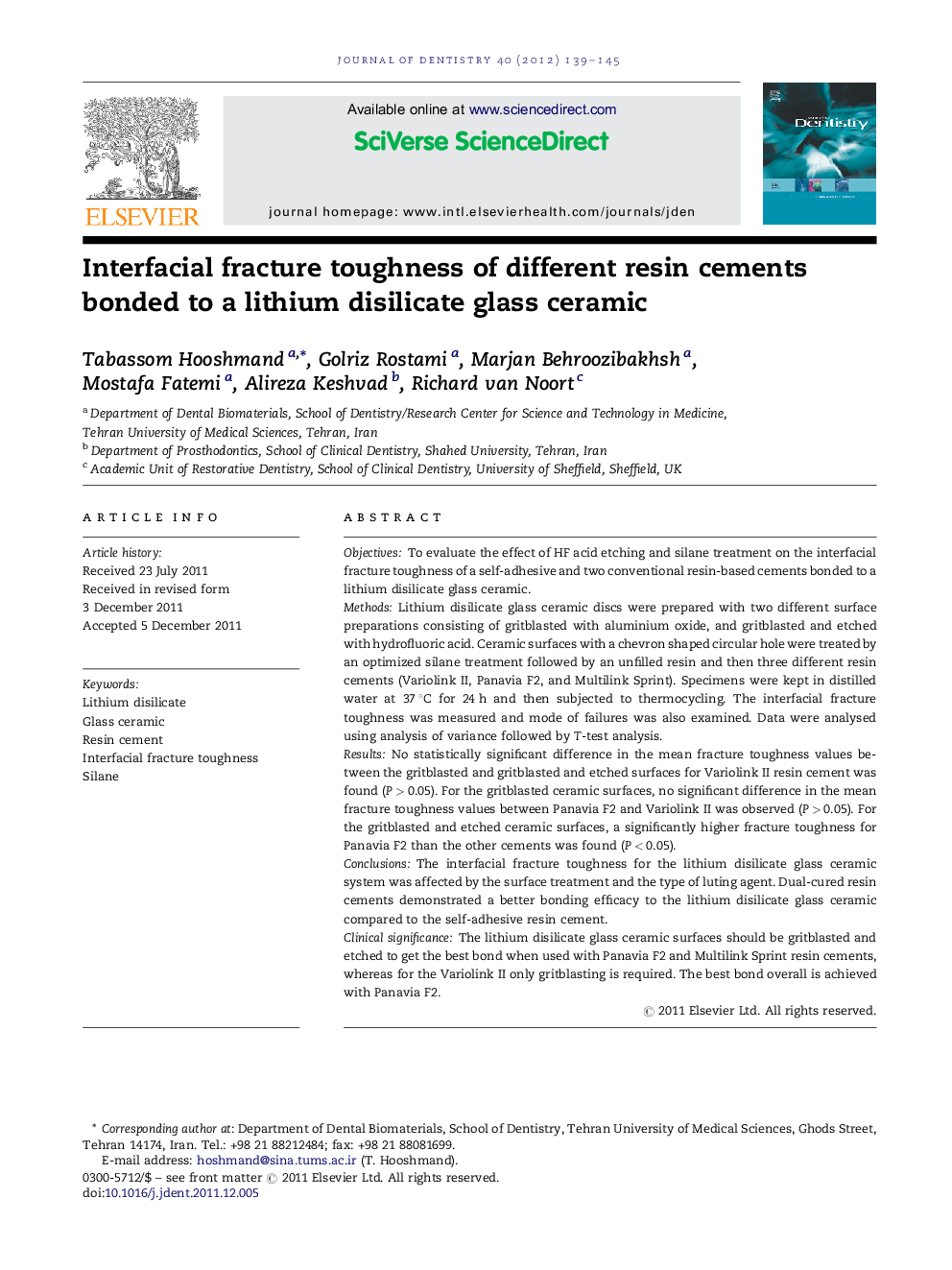| کد مقاله | کد نشریه | سال انتشار | مقاله انگلیسی | نسخه تمام متن |
|---|---|---|---|---|
| 3145132 | 1197043 | 2012 | 7 صفحه PDF | دانلود رایگان |

ObjectivesTo evaluate the effect of HF acid etching and silane treatment on the interfacial fracture toughness of a self-adhesive and two conventional resin-based cements bonded to a lithium disilicate glass ceramic.MethodsLithium disilicate glass ceramic discs were prepared with two different surface preparations consisting of gritblasted with aluminium oxide, and gritblasted and etched with hydrofluoric acid. Ceramic surfaces with a chevron shaped circular hole were treated by an optimized silane treatment followed by an unfilled resin and then three different resin cements (Variolink II, Panavia F2, and Multilink Sprint). Specimens were kept in distilled water at 37 °C for 24 h and then subjected to thermocycling. The interfacial fracture toughness was measured and mode of failures was also examined. Data were analysed using analysis of variance followed by T-test analysis.ResultsNo statistically significant difference in the mean fracture toughness values between the gritblasted and gritblasted and etched surfaces for Variolink II resin cement was found (P > 0.05). For the gritblasted ceramic surfaces, no significant difference in the mean fracture toughness values between Panavia F2 and Variolink II was observed (P > 0.05). For the gritblasted and etched ceramic surfaces, a significantly higher fracture toughness for Panavia F2 than the other cements was found (P < 0.05).ConclusionsThe interfacial fracture toughness for the lithium disilicate glass ceramic system was affected by the surface treatment and the type of luting agent. Dual-cured resin cements demonstrated a better bonding efficacy to the lithium disilicate glass ceramic compared to the self-adhesive resin cement.Clinical significanceThe lithium disilicate glass ceramic surfaces should be gritblasted and etched to get the best bond when used with Panavia F2 and Multilink Sprint resin cements, whereas for the Variolink II only gritblasting is required. The best bond overall is achieved with Panavia F2.
Journal: Journal of Dentistry - Volume 40, Issue 2, February 2012, Pages 139–145